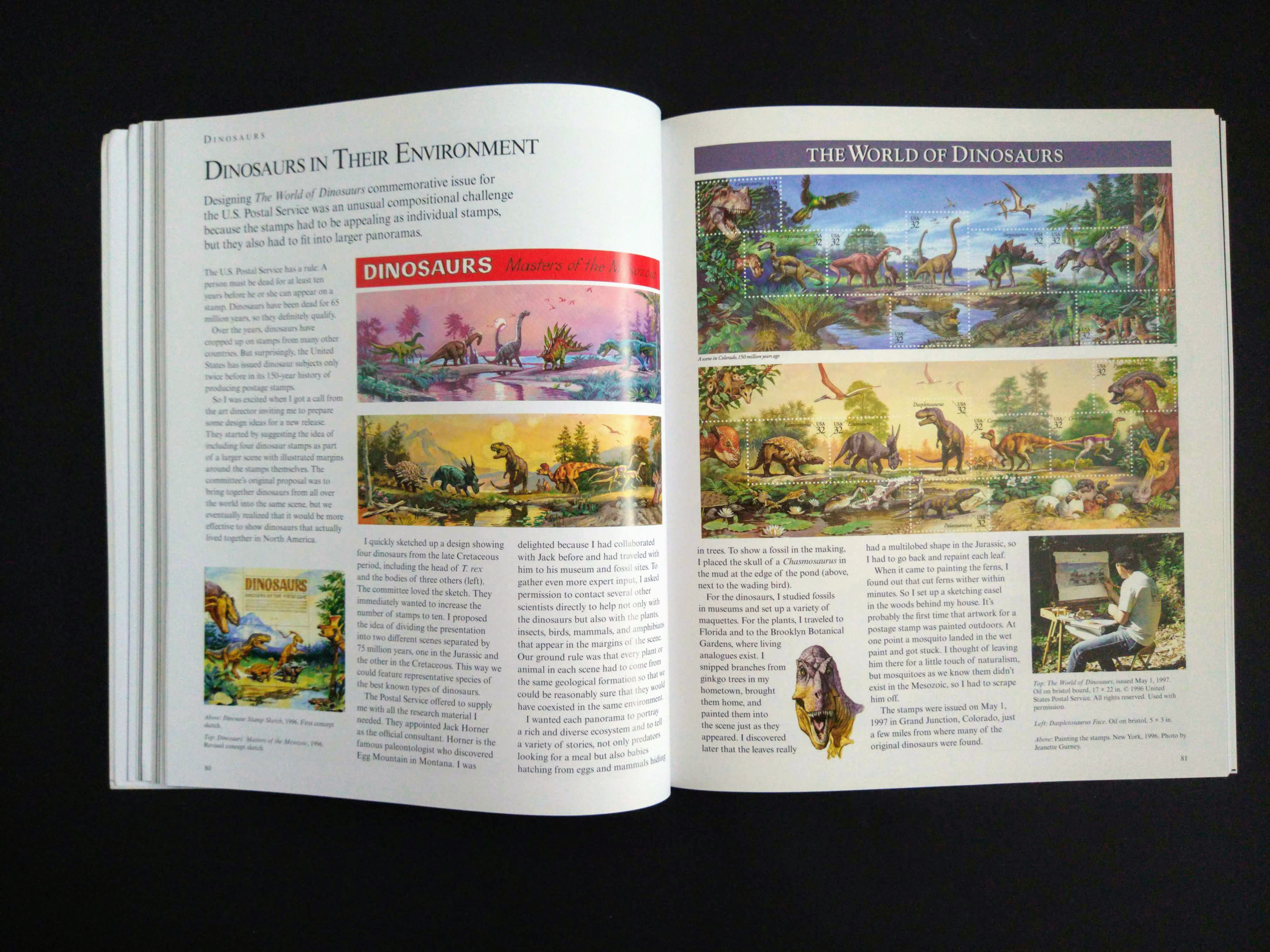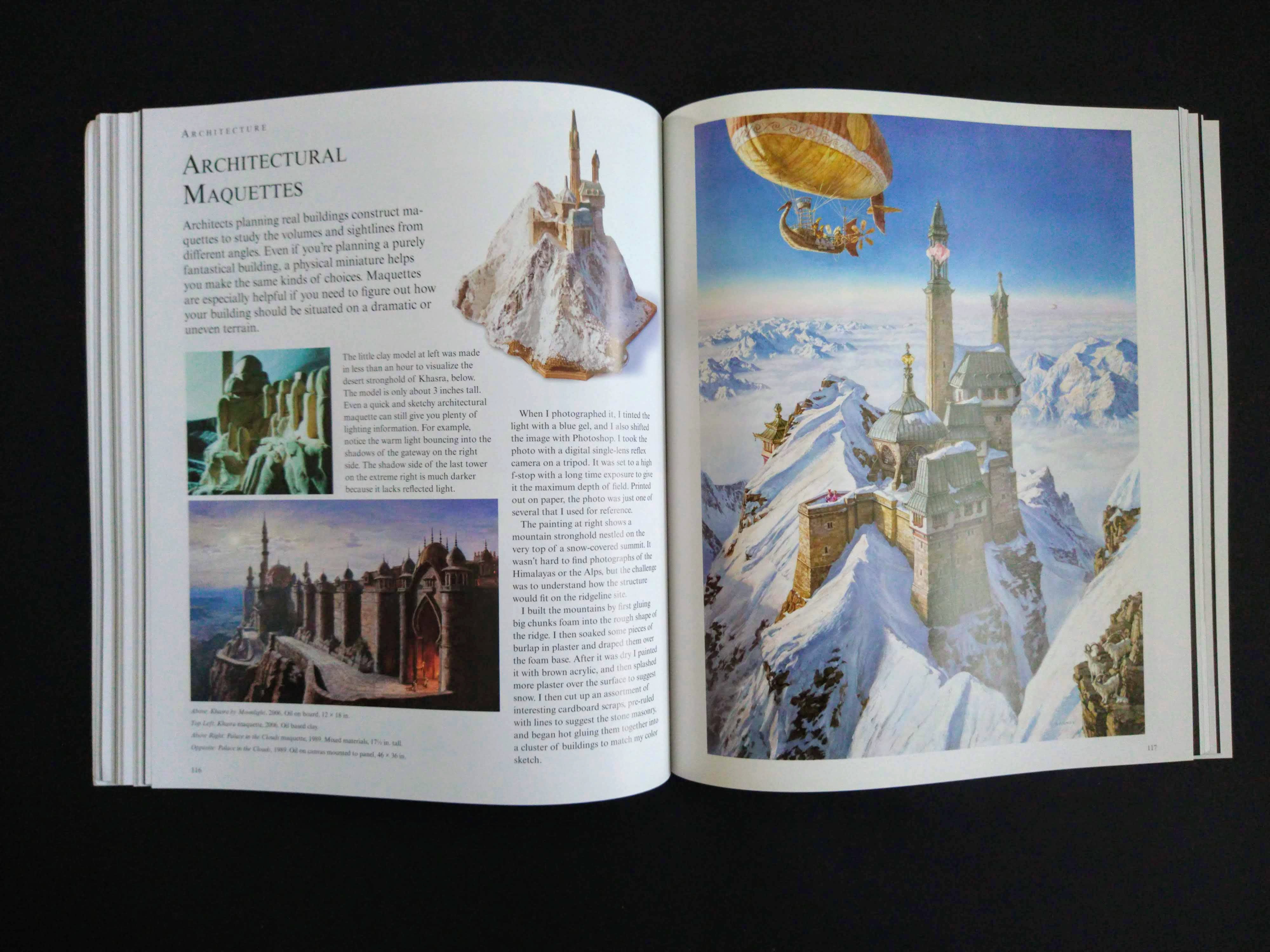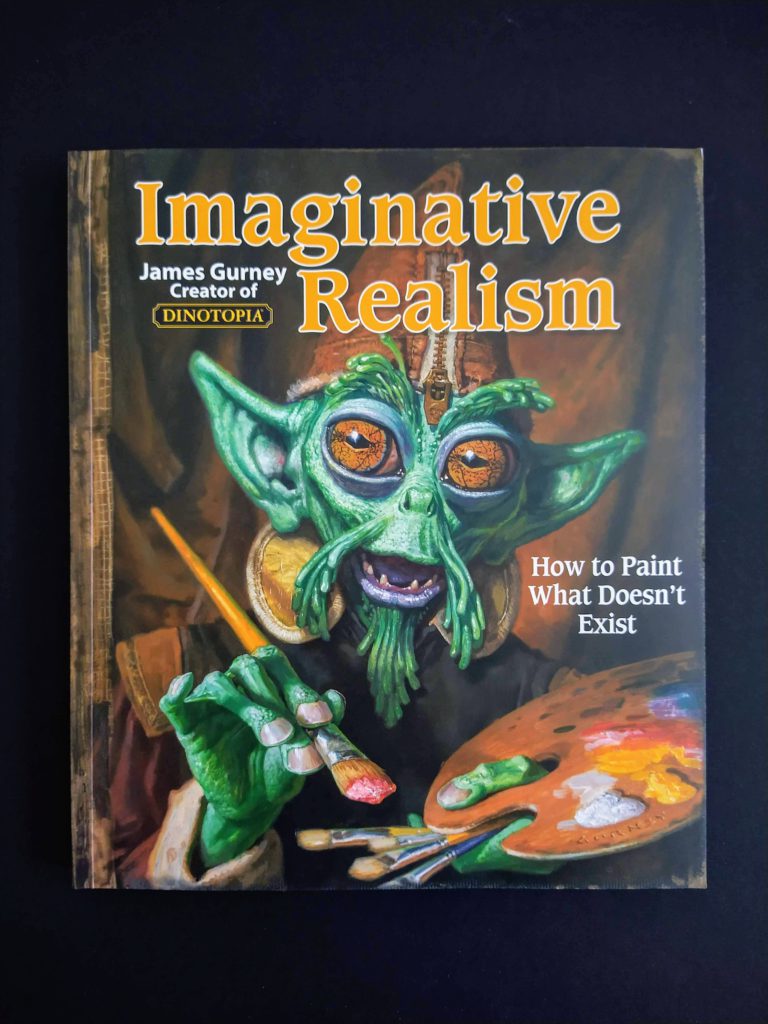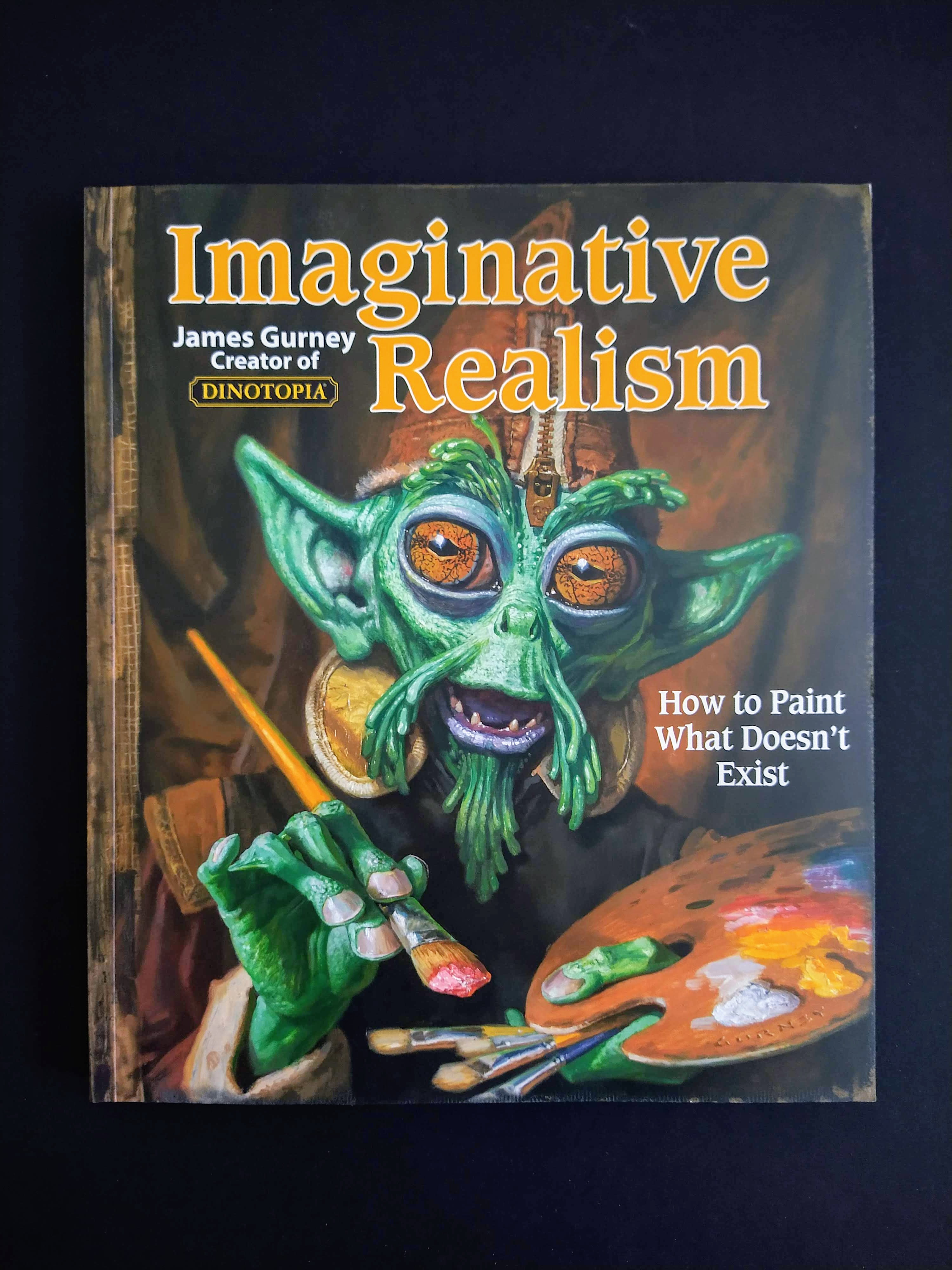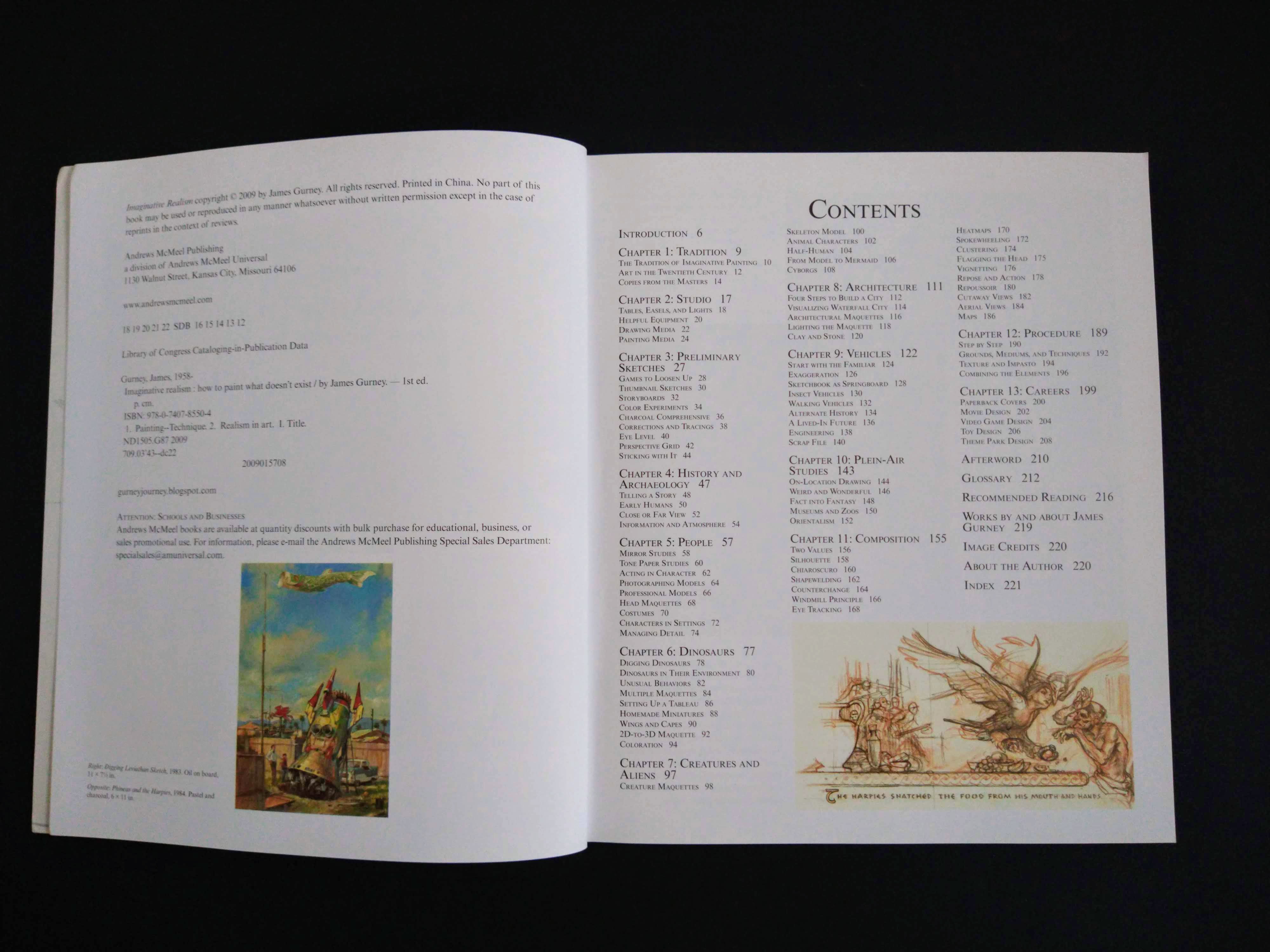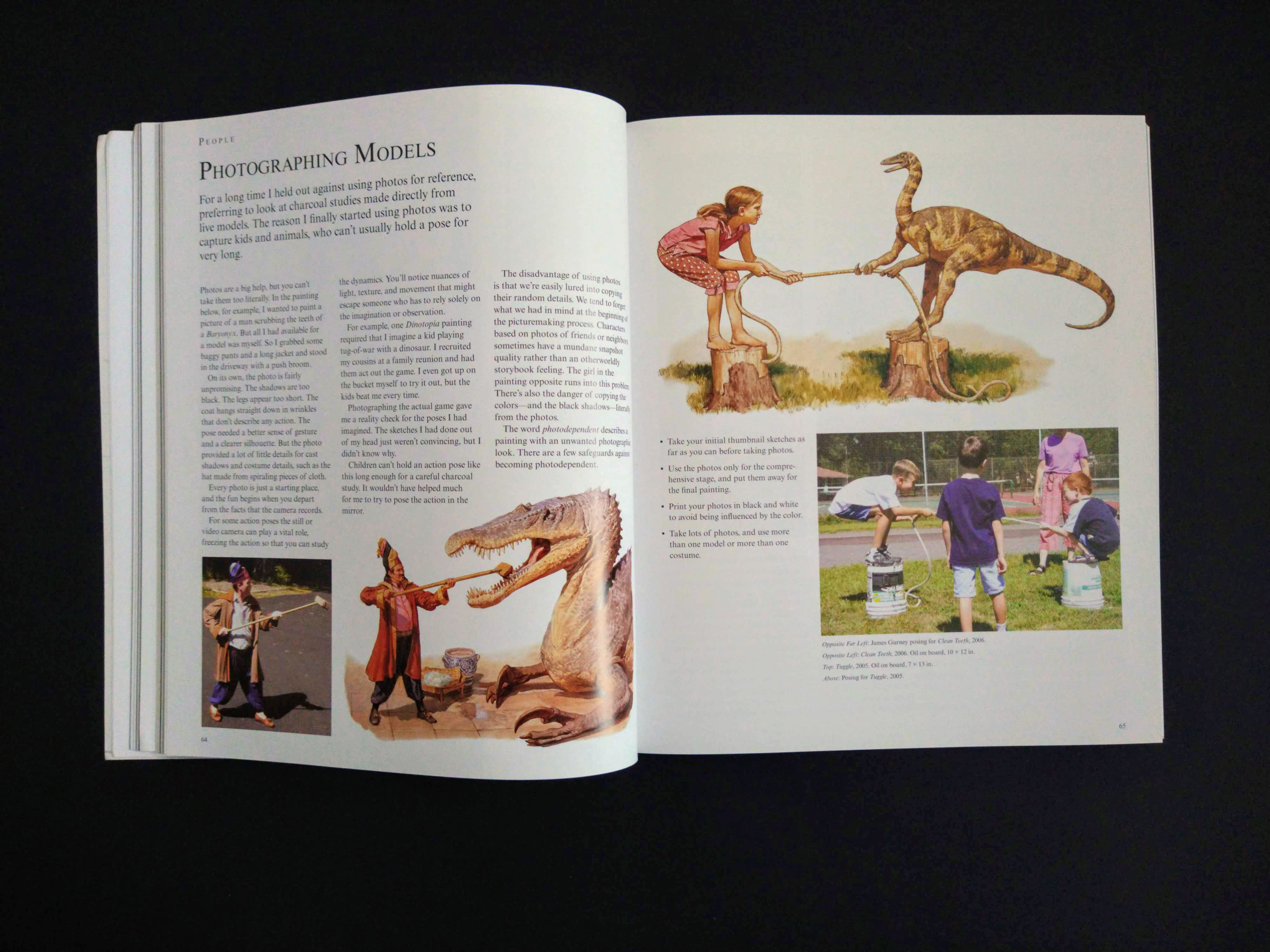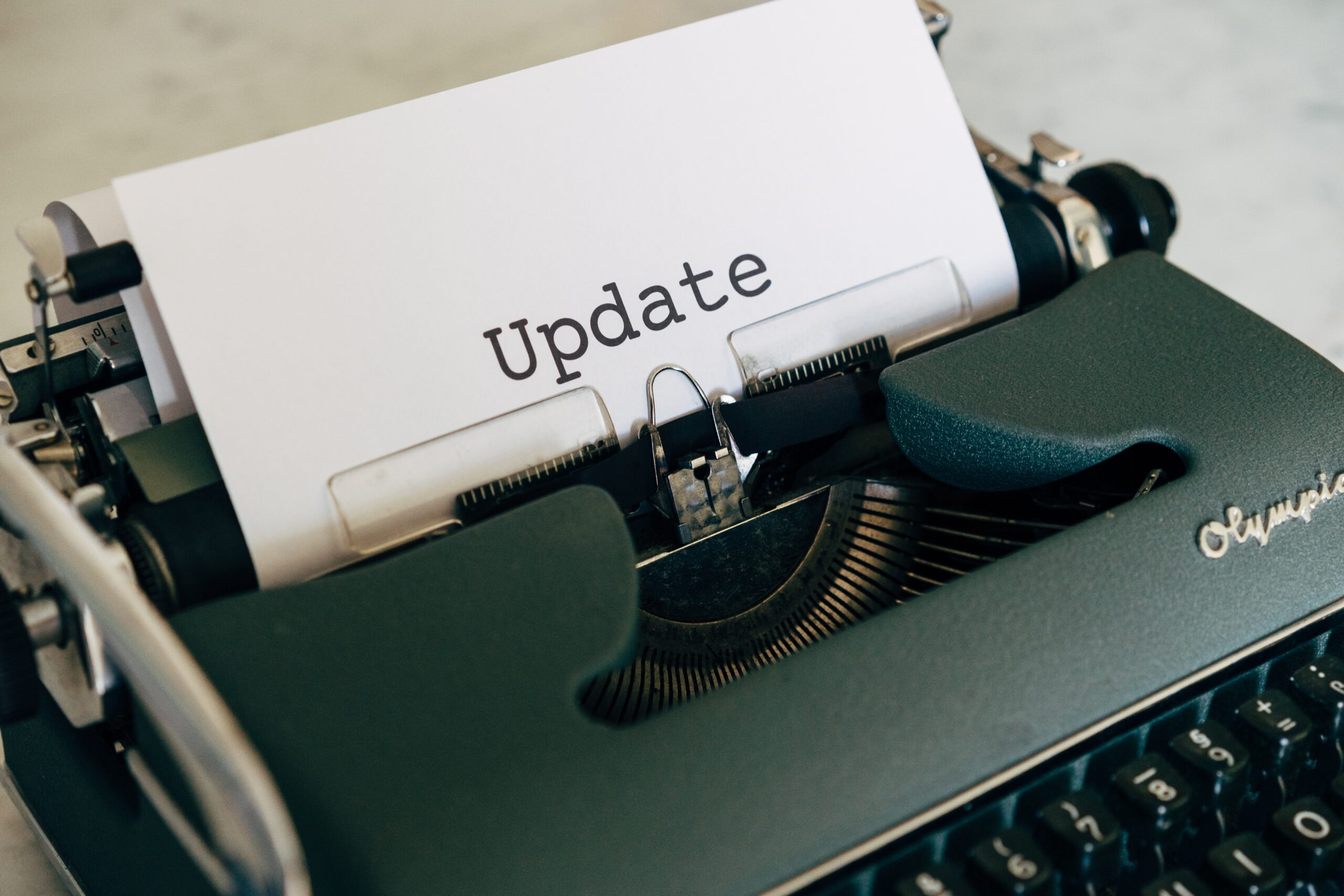Title: Imaginative Realism: How to Paint What Doesn’t Exist
Author: James Gurney
Publisher: Andrews McMeel Publishing
Year: 2009
Pages: 224
Available at: Amazon
About the artist
James Gurney is an award-winning fantasy artist, author of art instruction books Color and Light and Imaginative Realism, and the creator of Dinotopia, a series of illustrated storybooks of a world where dinosaurs and humans live together.
His artworks have been exhibited in various exhibitions and museums, some examples are the Norman Rockwell Museum, the Norton Museum of Art, The Smithsonian Institution and more. He’s known for his Dinotopia series and for painting things that don’t exist realistically.
Book description
This book is different from most other art books that teach you how to paint or draw things that exist in the world, like portraits, landscapes or still lifes. James Gurney is known for drawing things that don’t exist, like dinosaurs and aliens with realistic details. In this book, he will show you his tools and methods in achieving all those imaginary paintings that look real, some of those methods have been used since the Renaissance by old masters.
400 illustrations in full colour are scattered around the over 200 pages, that’s an average of 2 per page!
This book gives you the tools and knowledge needed for you to create your own fantasy or science fiction world.
Content
Introduction
A short introduction on the problems in trying to paint from imagination, how he overcame them, and what you can expect from this book.
Chapter 1: Tradition
Talks about how people in the past painted imaginary landscapes, scenes and creatures like angels and demons. And how you can learn from copying the old masters’ work.
Chapter 2: Studio
A list of tools and equipment that he uses with description on their uses for indoor or outdoor painting and drawings.
A list of drawing and painting tools and materials that he uses, with explanations on what they’re for and how he uses them.
Chapter 3: Preliminary Sketches
Talks about how you can loosen up your sketches, thumbnail sketches, storyboards, experimenting with colours, tracing etc
Also gave tips of perspectives like finding eye level, making a perspective grid and being patient with your progress.
Chapter 4: History and Archaeology
Talks about how he’s able to paint scenes of the past by visiting the sites in real life, researching, finding references and using sculptures as reference.
Chapter 5: People
Shows us many different ways he uses to help him draw people, such as using a mirror, tonal study, acting in costume, finding models and more.
Chapter 6: Dinosaurs
Talks about the challenges and methods he used to bring dinosaurs to life in his paintings by studying the skeletons, their behaviour, deducing the skin colours etc.
Chapter 7: Creatures and Aliens
Talks about and gives examples of his process in painting creatures like aliens, mermaids, cyborgs and more.
Chapter 8: Architecture
Talks about how he creates imaginary cities using various tools to help him visualise the lighting and structure for his paintings.
Chapter 9: Vehicles
Talks about how he creates vehicles designs that look like they’re from another time by starting with what’s familiar, exaggerating, combining with other elements etc, while also thinking about their feasibility.
Chapter 10: Plein-Air Studies
Talks about how he does plain air paintings and studies of different places that he visits and turning them into part of his imaginary paintings.
Chapter 11: Composition
Lots of composition tips and methods to help balance your paintings, draw attention, make them more interesting etc.
Chapter 12: Procedure
Step by step walkthrough of one of his paintings. He then talks about different techniques and painting/ drawing mediums.
Chapter 13: Careers
Talks about some career paths that one can go on with the skills to paint from imagination.
Afterword
A short outro.
Glossary
List of art terms and their meaning.
Recommended Reading
My review
Painting from imagination is something I’m trying to achieve all the time. I am able to paint what I see pretty decently, however, when it comes to painting from imagination, I get lost and confused with things like composition, lighting, colours etc, even with lots of references, it’s still very hard to find what I’m looking for. I’ve heard of the artist James Gurney from reading his other book: colour and light. I was amazed at his paintings, the people and dinosaurs living together, painted with so many details and the paintings felt so real. Then I found out he had another art instruction book called imaginative realism, so I had to read it. The book talked about his processes and methods, tips on achieving realistic paintings from modelling reference. A lot of the examples are of drawing and painting dinosaurs, even tho I’m not looking to paint dinosaurs, I still learnt a lot from the book and things I should try out to better my drawings and paintings.
I think this book is great for people who have some experience with the fundamentals of art and want to learn how to paint from imagination.
I hope you’ve enjoyed reading this artbook review on Imaginative Realising by James Gurney.
I hope you’ve enjoyed reading this post and has found it useful. If you purchase anything through the affiliate links that I’ve provided, I’ll get a small amount of commission (at no extra cost to you!) which helps me continue writing art-related blog posts and tutorials like this one.
You may also be interested in:
- Art Fundamentals – 3D Total Publishing
- Color and light: A Guide for the realist painter – James Gurney
- Steal Like an Artist – Austin Kleon
Support me on Ko-fi! Your donations and support mean a lot to me and it helps me keep doing what I’m doing!
Like my artworks? You can get them in prints, stickers or badges form on my Etsy shop!
Follow me on Instagram to see more of my art!
Below are some photos of the book:
